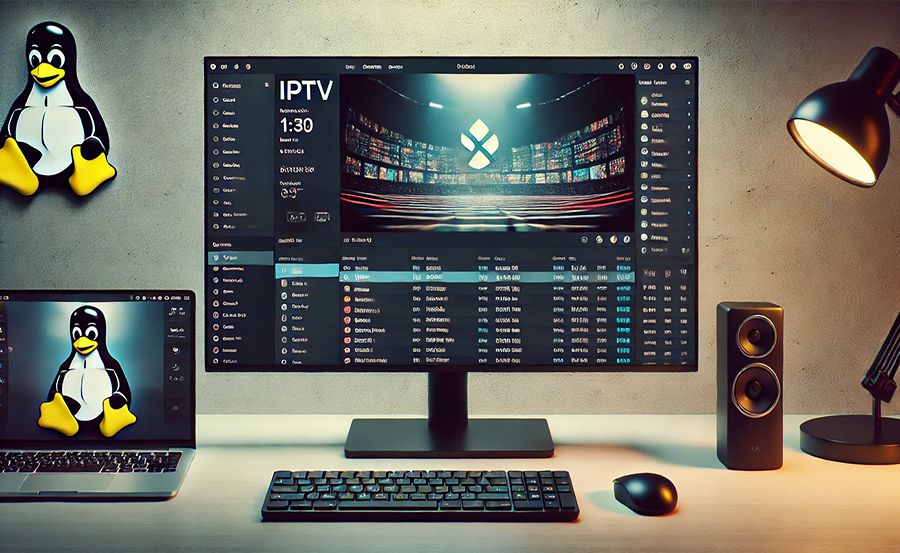If you’re a Linux user looking to dive into the world of Internet Protocol Television (IPTV), you’re in the right place. This guide will walk you through everything you need to know about enjoying IPTV on your Linux system. As more and more users turn away from traditional cable TV services, IPTV is becoming a preferred alternative, offering a vast array of channels at your fingertips, often with better flexibility and lower costs.
Among the many IPTV services available, Kemo IPTV stands out, thanks to its unlimited IPTV subscription that provides access to thousands of channels worldwide. However, for Linux users, the setup can be a bit different, but not to worry—this guide will cover all the essentials, from installation to tips for the best viewing experience.
Buy 1 Year IPTV Subscription and Enjoy Unlimited Content
What Exactly is IPTV?
IPTV, or Internet Protocol Television, is a service that delivers television programming and other video content via the internet, as opposed to traditional terrestrial, satellite, or cable television formats. Unlike downloaded media, IPTV offers the ability to stream the source media continuously, which is why it’s such a popular choice for live broadcasts and events.
Pro Tip:
Say goodbye to cable and hello to convenience with 1 Year Kemo IPTV Subscription our affordable IPTV subscription service.
There are three types of IPTV formats, which include live television, time-shifted media (i.e., for catch-up or start-over TV), and video-on-demand (VOD). This ecosystem allows users the flexibility to choose how and when they consume their chosen content.
Why Choose IPTV Over Traditional TV?
With the shift toward digital, IPTV has gained traction for several reasons, including:
- Cost-Effectiveness: Users can save considerable amounts on subscription fees.
- Flexibility: Watch content on-demand and never miss out due to DVR issues.
- Variety: Vast selection of channels from around the globe.
Additionally, IPTV provides higher-quality streaming options and better adaptability on different devices, including Linux machines, without being locked into a rigid service contract.
Setting Up IPTV on Linux
Now that we’ve covered what IPTV is all about, it’s time to set it up on a Linux system. Unlike other platforms, Linux offers unique flexibility in how you set up and run applications, which can be a boon if you are willing to do a little bit of work initially.
Choosing the Right Player
Before diving into setup, you need a reliable IPTV player. VLC Media Player and Kodi are among the most preferred options on Linux. They both offer a range of features and support various codecs, making them versatile choices.
1. VLC Media Player: Known for its simplicity and power, VLC is a straightforward option for streaming IPTV. Its cross-platform compatibility and open-source nature make it highly adaptable.
2. Kodi: A robust media hub that allows various add-ons. It can be a bit of an overkill for IPTV, but if you also plan to use it for managing other media, it’s a perfect fit.
Installing VLC for IPTV
VLC is often pre-installed on many Linux distributions, but if not, you can easily install it. Open your terminal and execute the following commands:
- For Ubuntu:
sudo apt update && sudo apt install vlc - For Fedora:
sudo dnf install vlc - For Arch Linux:
sudo pacman -S vlc
Once installed, open VLC and navigate to ‘Media’ > ‘Open Network Stream.’ Enter the URL of the IPTV subscription you’ve chosen, in our case, the URL provided by Kemo IPTV.
Kemo IPTV: The Top Choice for Unlimited IPTV Subscription
When it comes to picking an IPTV provider, Kemo IPTV rises above the competition for various reasons. The service promises access to thousands of channels, a feature-rich interface, and competitive pricing. But what really makes it the best IPTV subscription available worldwide? Let’s see.
Features of Kemo IPTV
- Global Channels: Broadcasts from over 90 countries.
- High Compatibility: Works seamlessly with multiple devices and operating systems including Linux.
- Customizable Packages: Get what you pay for with various subscription packages.
These attributes do not only enhance viewing pleasure but also show why Kemo IPTV is regarded as a reliable IPTV solution for millions of users around the globe.
Installation and Setup on Kemo IPTV
Subscribing to Kemo IPTV is as easy as visiting their website, selecting your preferred package, and entering your payment information. You’ll receive an email with setup instructions tailored to your device, making ensuing installation a breeze.
For Linux users, ensure that your VPN is active during setup to enjoy uninterrupted service. This helps to maintain privacy and prevent geo-restrictions from hindering your viewing experience.
Optimizing IPTV Performance on Linux
To get the best viewing experience, consider the following optimization tips:
Network Setup
Ensure your internet connection is stable. An Ethernet connection is preferable to Wi-Fi for reliable streaming. If you must use Wi-Fi, ensure the signal strength is optimal and the network is not congested.
If you’re experiencing any buffering issues, consider using a dedicated bandwidth for IPTV streaming or upgrade to a higher internet speed plan.
Regular Software Updates
Always keep your system and applications, including your IPTV player, updated. Updates often include performance improvements and bug fixes that can significantly enhance your streaming experience.
Getting the Most Out of Your Kemo IPTV Subscription
Once everything is set up, it’s time to maximize your KemoIPTV service. Here are some ways to get the best out of it:
Using the Multi-View Feature
Never miss a moment of action. Kemo IPTV’s Multi-View feature allows you to watch different channels on the same screen, essentially perfect for those with multifaceted interests.
Utilizing Catch-Up TV
Thanks to Kemo IPTV’s catch-up feature, you won’t have to worry about missing your favorite shows. This allows you to rewind and watch from the past seven days, offering the flexibility traditional television lacks.
Exploring the Possibilities with IPTV on Linux
By now, you should be ready to enjoy IPTV on your Linux system. The journey from a traditional method of consuming media to a modern, flexible viewing experience is an exciting transition with endless possibilities.
Remember, the power of IPTV is in its flexibility to adapt to your lifestyle, offering not just a plethora of choices but also the liberty to decide when and how you want to access them. With Kemo IPTV, you have in hand a world-class service to relish the best that global entertainment has to offer.
FAQs about IPTV on Linux

Is Kemo IPTV compatible with all Linux distributions?
Yes, Kemo IPTV is designed to work seamlessly across various Linux distributions, provided you have a compatible IPTV player like VLC or Kodi.
How can I resolve buffering issues when using IPTV on Linux?
Buffering often relates to bandwidth issues. Ensure you have a stable, fast internet connection, preferably via Ethernet. Also, check if your VPN settings are optimized for streaming.
Do I need a VPN with Kemo IPTV?
While it’s optional, using a VPN is recommended to protect your online activity and bypass any geo-restrictions, enhancing your streaming reliability.
Can I watch IPTV on multiple devices with one subscription?
Yes, Kemo IPTV supports multi-device streaming, but it depends on your subscription package. Be sure to verify this while opting for the service.
Is IPTV safe to use?
As long as you are using a legitimate service like Kemo IPTV, IPTV is safe to use. Avoiding illegal streams is crucial to ensuring your safety and legal compliance.
Ultimate Guide to IPTV Streaming on LG Smart TV Devices

